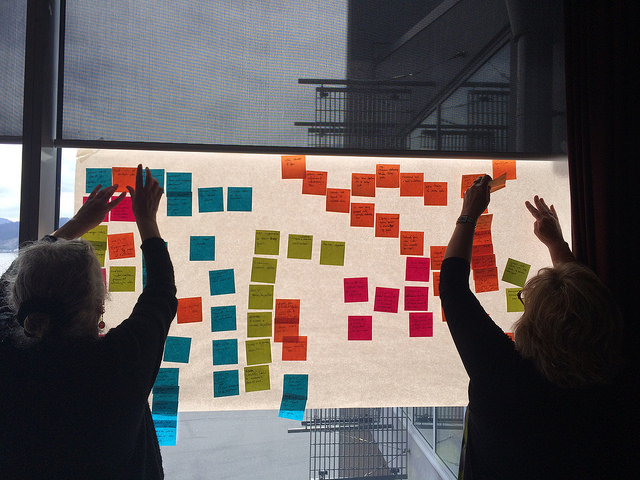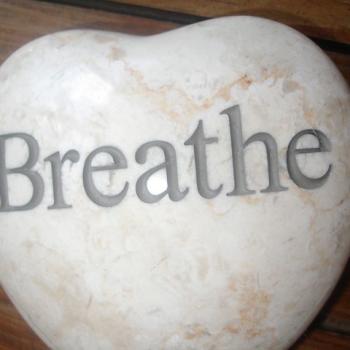
Strategic Planning for Everyday Life
I appreciate having a good plan.
After all, I tend to be more of a thinker than a feeler. I studied law and public administration. It is not surprising I am comfortable with strategic planning.
Having a plan helps me feel like I have taken time to think things through. It helps me understand and explain what I am doing and find other people who can help me.
Even if it is not written down, even if I am the only one who knows what it is, a plan is part of my safety net.
When we develop a shared plan it is important for us to believe in it, be committed to it.
As much as I recognize the importance of a good plan, I often become frustrated by the planning process. I have been in quite a few planning meetings where there was not much listening or other people skills.
You asking me for my ideas, then telling me what you already decided the plan would be, is not effective strategic planning. It is also not effective leadership.
Our plans do not come out of books or from websites. We may find fresh ideas which spark our planning. It is even possible for us to use a structure or approach we see somewhere else.
The plans I actually implement and follow through to complete come from within me.
Strategic planning is not following a script or imposing a set of expectations. It is not increasing last year’s goals by a certain percentage or figuring out what someone else wants.
Planning is not just about seeing obstacles and finding ways around them.
Strategic planning is translating our core values and principles into action steps.
We cannot plan well without recognizing our own values and specific steps.
Do Monks Practice Strategic Planning?
Many of us like to think we can plan our way out of difficulties. Some of us believe we can assess challenges and, if we are realistic, set goals to overcome them. We are confident we can grow in ways we want to grow if only we clarify our intentions.
Our plans and goals are often primarily focused on what we believe we can force ourselves to do. If we stretch a little further, work a little harder, we can perform at a higher level. We can get closer to where we want to be if we only push that much more. We see growth as being able to reach for more next year than we could last year.
The monks I know plan and set goals differently than we tend to do.
Monks, and monastic communities, do not necessarily strive to do more work each year. Their present and future do not depend on reinforcing their perception they can do better. Their plans and goals are not designed primarily to exceed their past performance.
Monastic planning and goal setting recognizes we are more than what we do. In addition to accomplishing more or performing at a higher level, our goals shape who we are.
Each member of a monastic community looks within themselves to address deeper questions. They focus on seeing themselves more honestly as well as becoming better at what they do. The community, as well as each person in it, works toward goals based in their core values.
Monastic plans and goals reflect the ways monks know themselves well. As members of the community grow in depth, their plans reflect that depth and growth.
How Can Monastic Examples Strengthen Our Strategic Planning?
Following monastic examples can help strengthen strategic planning in our everyday lives.
First, our strategic planning needs to begin in and grow from our reflection.
Strategic planning is more than finding a strategy to overcome or avoid obstacles.
Where we want to go, and why, are the sparks which light the fire of our planning. Our core values inspire our actions, and our leadership. We are not only trying to avoid problems.
Leaders who engage in strategic planning begin with asking questions and listening.
Strategic planning cannot be imposed from above or from outside. We are not committed to completing plans someone else tells us to implement.
Second, the more deeply we understand our own values the stronger our plans will be.
The better we know our deepest selves and appreciate our values, the clearer our plans can become.
Strategic planning is more than setting goals and figuring out what we will need to spend. Recognizing the deeper aspects of ourselves and other people allows us to become stronger leaders and planners.
As we come to see ourselves more intimately we are able to plan more effectively.
Third, our plans help shape who we are becoming,
Strategic planning is more than choosing the words we will put down on paper. The more accurately we can describe what inspires us, the closer we can get to our goals.
Each of us has goals of our own. Strategic planning is a way to see the connections and relationships which allow us to work together.
Strategic Planning Which Makes a Difference
We each have our own personal stories. Our most essential stories tell us what makes us uniquely ourselves, and how we can work together with other people.
As we share our stories we discover what inspires us and sparks the fire within our hearts. We are able to see the fire within each other and recognize the same fire within ourselves.
The strategy of our strategic planning is not chosen by someone else. Our strategy is sharing ourselves and working together.
Our stories describe our own core goals and values. When we recognize shared values and shared goals, our plan grows out of our strategy.
The monks I know have shown me how strategic planning for a community grows from our shared values.
What can monks teach us about strategic planning today?
How does your reflection on your own values shape your strategic planning this month?
[Image by Samuel Mann]
Greg Richardson is a spiritual life mentor and leadership coach in Southern California. He is a recovering attorney and university professor, and a lay Oblate with New Camaldoli Hermitage near Big Sur, California. Greg’s website is StrategicMonk.com, and his email address is [email protected].












